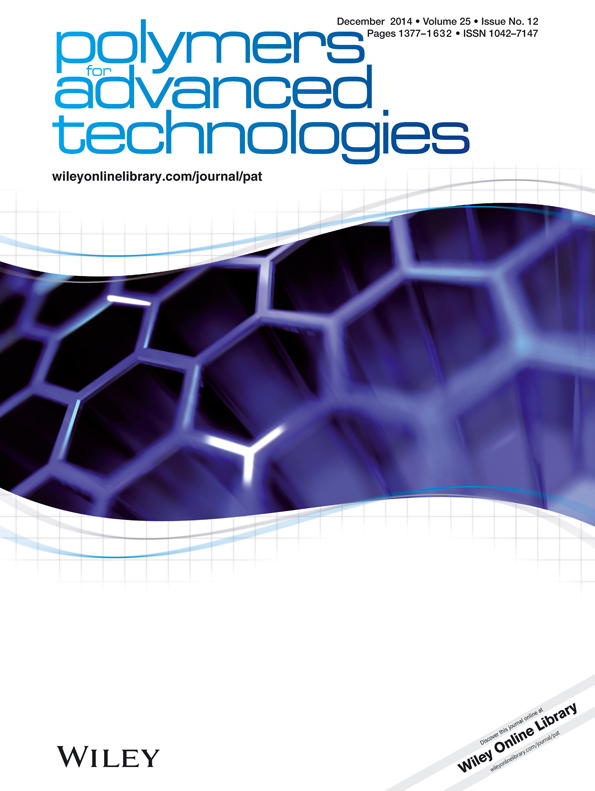Controlled migration of antifog additives from LLDPE compatibilized with LLDPE grafted maleic anhydride
Abstract
This paper summarizes a study of controlled migration of an antifog (AF) additive; sorbitan monooleate (SMO), from linear low density polyethylene (LLDPE) films containing a compatibilizer, LLDPE grafted maleic anhydride (LLDPE-g-MA). LLDPE/LLDPE-g-MA/SMO blends were prepared by melt compounding. Bulk and surface properties of compression molded LLDPE films containing SMO and LLDPE-g-MA were characterized using Fourier transform infrared spectroscopy and contact angle measurements. Thermal properties were investigated using a thermal gravimetric analyzer. Diffusion coefficient (D) was calculated, and AF properties were characterized using a “hot fog” test. Compression molded films were characterized for their morphology using high-resolution scanning electron microscopy, and rheological properties were measured using a parallel-plate rotational rheometer. It was found that the LLDPE/LLDPE-g-MA/SMO systems are characterized by a slower SMO migration rate, a lower diffusion coefficient, and lower contact angle values compared with LLDPE/SMO blends. These results are well correlated with results of a hot fog test. Morphological studies revealed a very fine dispersion of SMO in the LLDPE films, when 3 phr LLDPE-g-MA was combined with 1 phr SMO. Thermal analysis results show that the incorporation of 3 phr LLDPE-g-MA and 1 phr SMO significantly increases the decomposition temperature of the blend at T > 400°C. At high shear rates, the LLDPE blends show that the AF and the compatibilizer have a lubrication effect on LLDPE. Copyright © 2014 John Wiley & Sons, Ltd.




